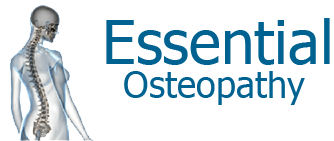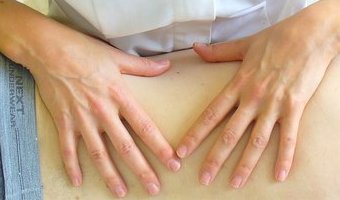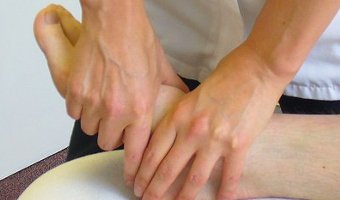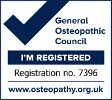Foot & ankle pain
There are a number of different problems which can result in foot pain and ankle pain:
- Ankle sprain – the most common of sports injuries, people often injure their ankle by rolling the foot inwards (inversion sprain) or outwards (eversion sprain). Usually these sprains result in ligamentous damage characterised by pain, bruising, stiffness and swelling in the ankle region. Factors that contribute to ankle sprains include weakness, stiffness or fatigue in the ankle, running on uneven surfaces or wearing high heels. Having established that there has been no breakage of bones, treatment initially should involve PRICE – protection, rest, ice, compression and elevation and then crutches and ankle support can be used to avoid further damage to the ligaments. Osteopathic treatment is then appropriate to address the problem and prescribe appropriate exercises and stretches to prevent any further injury of the area.
- Metatarsalgia & Morton’s neuroma – Metatarsalgia refers to pain around the ball of your foot. Specifically, pain between the 3rd and 4th toe relates to compression of the nerve that runs along this space. It is often quite a burning or piercing pain which can be aggravated by standing or walking or squeezing the front part of the foot inwards from each side and is associated with fallen arches or being flat footed. Treatment of the foot, ankle and further up the leg can often help this condition considerably together with putting a small pad under the affected area in your shoe.
- Plantar fasciitis – The plantar fascia is a thick band of tissue that runs from the front of the heel to the ball of the foot. It assists with the stabilisation of the foot during the movement however, when it strained and inflammed, it can cause the painful condition called plantar fasciitis. It is most often associated with sudden increased abnormal activity (running or similar), an overweight or sedantary lifestyle, repetitive strain (especially on hard surfaces), pronating feet or fallen arches and, possibly, ageing. Most often the pain is experienced under the foot when walking, gets worse when the patient is on their feet all day but, in some cases, can ease a little after walking for a period. You would be encouraged to ice the sole of the foot regularly initially and then roll your foot over a golf ball or similar to ease off the fascial tension. The Osteopath can give further advice and treat to ease the symptoms and reduce the chance of recurrence on either foot.
- Dropped or fallen arches – A number of patients present with dropped arches or foot pronation where the arch on the inside of the foot has collapsed down towards the floor. Quite often, this has a knock on effect on both the local foot dynamics but also further up the leg in the knee, hip and back. In these cases, insoles (or foot orthotics) may be prescribed to re-balance the body. The prescription and use of foot orthotics is controversial but, from my clinical experience and recent research, I have found that they ease the symptoms resultant of a number of different structural problems such as altered foot mechanics and leg length discrepancies. Slowly introducing made-to-measure orthotics can often correct structural imbalances throughout the body.
Many people seek treatment from Osteopaths for symptoms arising from the lower back, pelvic and sacro-iliac region or the knees. There are many possible causes for the aches and pains in these areas however, in quite a number of cases, the problem often originate from the feet. Walking with a pronated foot (fallen medial arch) forces most of the body weight to the inner border of the foot. As the person walks, the pronated foot arch collapses to various degrees which can force the knee of that leg to roll inwards which increases the ‘Q angle’ and causes strain to the structures of the knee. In turn, the pelvis rolls forward on the same side which results in torsion in the pelvis. This can lead to spinal lateral curves called scoliosis and low back pain. The only way to rectify the situation is to provide the necessary support using custom-made orthotics.
In the case of knee pain due to foot pronation, treating locally may alleviate the problem in the short term but it needs to be addressed using foot orthotics if long term relief is to be achieved. This is where Osteopathy treats ‘the body as a unit’ (one of the main principles of Osteopathy) rather than taking a more reductionist view.
Click here to read my blog article on fallen arches and foot orthotics (insoles) and on foot and ankle pain.
Janet’s testimonial on my treatment of her foot pain (click here for more testimonials):
“Last year I developed a very painful problem with one of my feet following some bruising. This got to the point where I could barely walk on it for months on end, and the GP I saw had no idea what was wrong. I limped in very slowly to see Fiona, and I walked out almost normally after one session where she worked on loosening up the tendons. After only a few more sessions and some work on my part, this was completely back to normal. It felt like a miracle cure after being unable to walk properly for so long.
I work on research into tendon injuries in animals. I can testify that these tissues are often more responsive to manipulation and/or proper exercises, than any drug or or more invasive measure. No-one has anything to lose by making a visit to an osteopath and doing that as soon as possible after injury, rather than leaving it as long as I did!. Fiona comes with my highest recommendation.”







